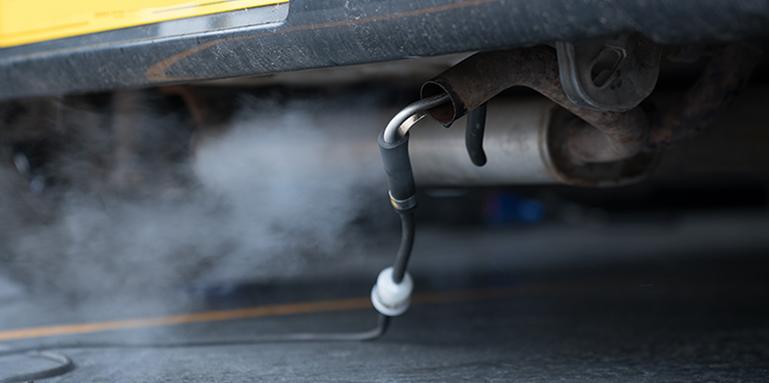Diesel Particulate Filters (DPFs) are critical components in modern diesel vehicles, designed to trap soot and other harmful particles from exhaust gases, reducing emissions and ensuring compliance with environmental regulations. However, over time, these filters can become clogged, leading to reduced engine performance, increased fuel consumption, and even costly repairs. Regular DPF cleaning is essential to maintain your vehicle’s efficiency and longevity. In this guide, we explore the ins and outs of DPF cleaning, offering expert advice from Cleanestor to keep your diesel engine in top shape.
What is a DPF and Why Does it Need Cleaning?
A Diesel Particulate Filter is a device installed in the exhaust system of diesel vehicles to capture and store particulate matter, such as soot, from the exhaust. The filter undergoes a process called regeneration, where accumulated soot is burned off at high temperatures, turning it into ash. However, not all soot is removed during regeneration, and ash buildup can clog the filter over time, reducing its effectiveness.
Cleaning your DPF prevents blockages that can trigger warning lights, reduce fuel efficiency, or even cause your vehicle to enter “limp mode,” limiting its performance. By following professional cleaning advice from Cleanestor Buying Guides, you can choose the right tools and methods to maintain your DPF effectively.
Signs Your DPF Needs Cleaning
Recognizing when your DPF requires cleaning can save you from expensive repairs. Common symptoms of a clogged DPF include:
- Warning Lights: A DPF warning light or check engine light on your dashboard.
- Reduced Performance: Sluggish acceleration or difficulty maintaining speed.
- Increased Fuel Consumption: A clogged DPF forces the engine to work harder, burning more fuel.
- Frequent Regeneration Cycles: If your vehicle attempts regeneration more often, it may indicate a blockage.
- Exhaust Smoke: Excessive black smoke from the exhaust is a telltale sign of DPF issues.
If you notice any of these signs, it’s time to consider cleaning your DPF to restore your vehicle’s performance.
Methods of DPF Cleaning
There are several methods to clean a DPF, ranging from DIY solutions to professional services. Below, we outline the most common approaches:
1. Passive Regeneration
This occurs automatically when driving at high speeds for extended periods, such as on highways. The exhaust temperature rises enough to burn off soot. However, this method is less effective for vehicles driven mostly in urban environments with frequent stops.
2. Active Regeneration
Active regeneration is initiated by the vehicle’s engine control unit (ECU) when it detects a clogged DPF. The system injects additional fuel to increase exhaust temperatures, burning off soot. This method works well but may not fully remove ash buildup.
3. Forced Regeneration
Performed by a professional mechanic using diagnostic tools, forced regeneration manually triggers the cleaning process. This is ideal for moderately clogged DPFs but may not be sufficient for severe blockages.
4. Off-Vehicle Cleaning
For heavily clogged filters, off-vehicle cleaning is the most effective solution. The DPF is removed and cleaned using specialized equipment, such as ultrasonic baths or high-pressure water jets. This method thoroughly removes soot and ash, restoring the filter to near-new condition.
5. Chemical Cleaning
Chemical additives can be used to break down soot and ash, either added to the fuel tank or applied directly to the DPF. While less invasive, this method is best for minor clogs and may not replace professional cleaning for severe cases.
How Often Should You Clean Your DPF?
The frequency of DPF cleaning depends on your driving habits, vehicle type, and environmental conditions. As a general rule:
- Highway Drivers: May only need cleaning every 100,000–150,000 miles due to frequent passive regeneration.
- Urban Drivers: May require cleaning every 50,000–75,000 miles due to limited regeneration opportunities.
- Heavy-Duty Vehicles: May need more frequent cleaning due to higher soot production.
Regular maintenance checks can help you determine when cleaning is necessary. Consult your vehicle’s manual or a trusted mechanic for tailored advice.
DIY vs. Professional DPF Cleaning
While DIY chemical additives and on-road regeneration can help maintain your DPF, professional cleaning is often the best choice for severe clogs. Professional services use advanced equipment to ensure thorough cleaning without damaging the filter. If you’re considering purchasing cleaning products or tools, check out Cleanestor Buying Guides for expert recommendations on the best DPF cleaning kits and additives.
Preventing DPF Clogs
Prevention is key to extending the life of your DPF. Here are some tips from Cleanestor to keep your filter in top condition:
- Drive at Highway Speeds: Regular highway driving promotes passive regeneration.
- Use High-Quality Fuel: Low-quality fuel can increase soot production, clogging the DPF faster.
- Avoid Short Trips: Short drives prevent the exhaust from reaching regeneration temperatures.
- Schedule Regular Maintenance: Routine inspections can catch DPF issues early.
The Environmental Impact of DPF Cleaning
Maintaining a clean DPF not only benefits your vehicle but also the environment. A properly functioning DPF reduces harmful particulate emissions, contributing to cleaner air and compliance with emission standards. By keeping your DPF in good condition, you’re doing your part to reduce your vehicle’s environmental footprint.
Conclusion
DPF cleaning is a vital maintenance task for diesel vehicle owners, ensuring optimal engine performance, fuel efficiency, and environmental compliance. Whether you opt for DIY methods or professional services, regular cleaning can save you from costly repairs and keep your vehicle running smoothly. For more expert tips and product recommendations, visit our blog for guides to find the best tools for your DPF maintenance needs.


